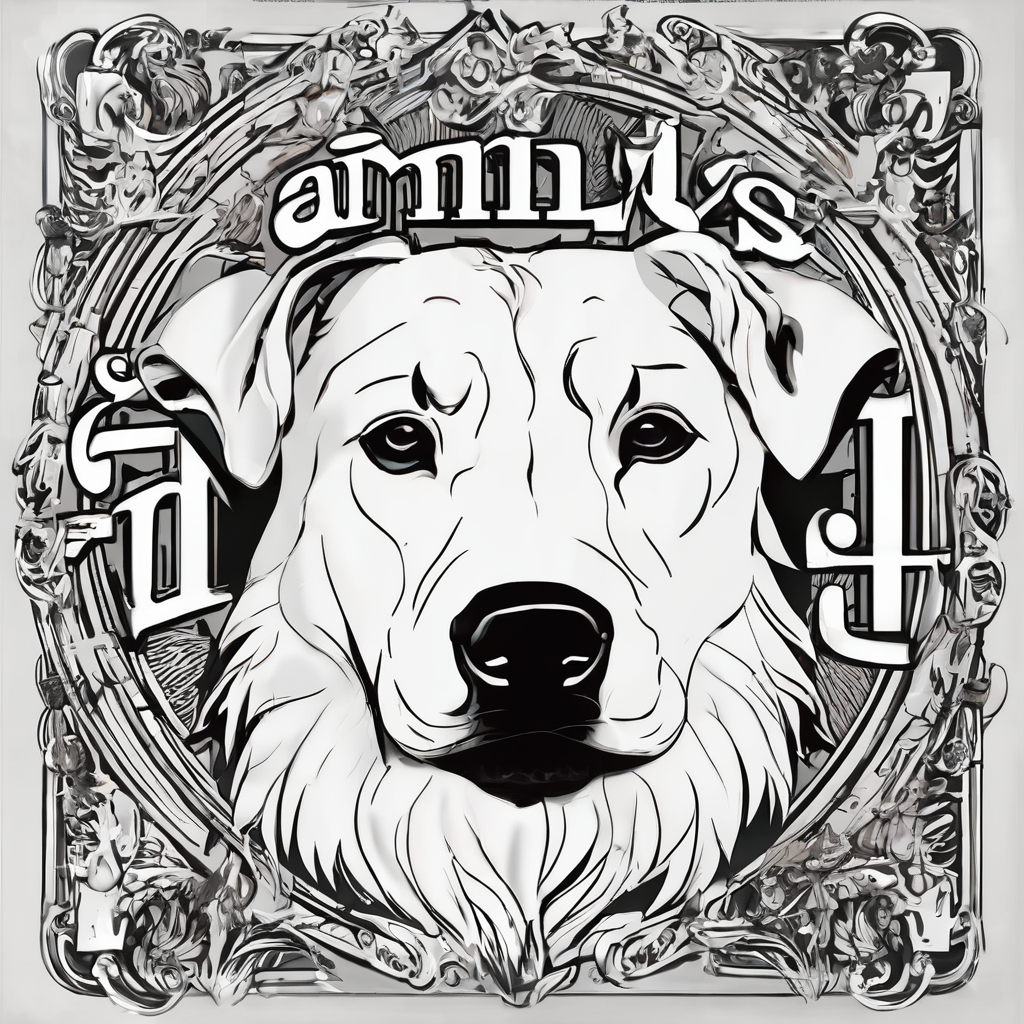Fleas and ticks pose serious health risks for your toy poodle. Accurately calculating the right dosage of medication is essential for protecting your furry friend while ensuring their safety. This guide offers practical steps to determine the ideal flea and tick medication dose tailored to your poodle’s weight and health status. By following these guidelines, you can confidently shield your pet from pests, promoting their well-being and comfort. Your poodle deserves the best care, and it starts with the right medication dosage.
Understanding Flea and Tick Medications for Toy Poodles
Keeping your toy poodle healthy involves choosing the right flea and tick medications. These medications are crucial in protecting your pet from parasites that can cause discomfort and serious health issues. There are various options available, including topical treatments, oral medications, and collars. Each type has its benefits and is designed to fit different preferences in toy poodle care.
Sujet a lire : Crafting the Perfect Diabetic Diet for Your Fox Terrier: A Comprehensive Guide
Topical treatments are applied directly to the skin and work by killing fleas and ticks on contact. Oral medications, on the other hand, are ingested and work systemically, providing internal protection against parasites. Collars release active ingredients over time, offering long-lasting defense.
Selecting the appropriate medication for toy poodles is vital due to their small size and sensitive skin. Not all flea and tick medications are suitable for every dog, and toy poodles may react differently to certain ingredients. Common ingredients include fipronil, which targets the nervous system of parasites, and imidacloprid, effective against fleas.
A voir aussi : Effective Strategies for Addressing Food Guarding in Rottweilers: A Guide to Managing Resource Possession
Before starting any flea and tick regimen, consult with a veterinarian to ensure the chosen medication aligns with your toy poodle's specific health needs. This careful approach ensures your pet remains safe and healthy while enjoying a life free from pesky parasites.
Factors Influencing Dosage Calculation
When determining the dosage calculation for flea and tick medications in toy poodles, several factors must be considered. The most critical factor is the dog's weight. Toy poodles, being small, require precise weight-based dosage guidelines to ensure safety and efficacy. Overdosing can lead to adverse effects, while underdosing may not provide adequate protection.
Weight Considerations
Weight plays a pivotal role in dosage determination. Medications are often dosed per kilogram or pound, making it essential to know your toy poodle's exact weight. Regularly weighing your dog helps in administering the correct dosage and adjusting as necessary.
Health Factors
Age and existing health conditions also influence dosage calculations. Puppies, seniors, or toy poodles with chronic health issues may require special considerations. For instance, a toy poodle with liver or kidney problems might metabolize medication differently, necessitating adjustments.
Veterinary Consultation
Consulting a veterinarian is crucial for accurate dosage calculation. They can evaluate all relevant factors—weight, age, and health conditions—to recommend the most suitable medication and dosage. This professional guidance ensures your toy poodle receives optimal protection without compromising their health. Always follow veterinary advice closely to maintain your pet's well-being.
Calculating the Ideal Dose
Determining the ideal dose for your toy poodle involves understanding the dosage formula and medication strength. This ensures your pet receives effective protection without adverse effects.
Understanding the Medication Label
Medication labels provide crucial information, including measurement units and active ingredient concentration. These details are essential for calculating the correct dosage. For instance, a label might specify the dosage in milligrams per kilogram (mg/kg), guiding you on how much medication to administer based on your poodle's weight.
Weight-Based Dosage Calculations
Using the dosage formula, first identify the medication's strength, then apply it to your poodle's weight. For example, if the medication requires 5 mg/kg and your toy poodle weighs 4 kg, the calculation would be 5 mg x 4 kg = 20 mg.
Example Calculations for Different Weight Ranges
- 3 kg toy poodle: 5 mg/kg x 3 kg = 15 mg
- 5 kg toy poodle: 5 mg/kg x 5 kg = 25 mg
Step-by-Step Guide to Calculating the Correct Dose
- Check the medication label for dosage instructions.
- Weigh your toy poodle accurately.
- Apply the dosage formula: medication strength x weight.
- Administer the calculated dose carefully.
This approach ensures precise dosing tailored to your toy poodle's needs.
Safety Guidelines for Flea and Tick Medications
Ensuring medication safety is crucial when administering flea and tick treatments to toy poodles. Recognising potential side effects and understanding overdose risks are key to safeguarding your pet's health.
Recognizing Potential Side Effects
Flea and tick medications can sometimes cause side effects. Common reactions include mild skin irritation, excessive drooling, or temporary lethargy. More severe symptoms, although rare, might involve vomiting, diarrhoea, or seizures. Monitoring your toy poodle after treatment helps in identifying any adverse effects early.
Signs of Overdose and What to Do
Overdose risks increase if the dosage exceeds recommended levels. Symptoms of an overdose may include severe vomiting, tremors, or difficulty breathing. If you suspect an overdose, seek veterinary assistance immediately. Quick action can prevent long-term health issues.
Safe Handling and Administration Practices
Proper handling of medications ensures safety for both you and your pet. Always wash your hands after applying topical treatments and store medications out of reach of children and pets. When administering oral medications, follow dosage instructions precisely to avoid overdose risks. Use a syringe or pill pocket if necessary to ensure your toy poodle receives the correct dose.
Recommended Flea and Tick Medications for Toy Poodles
Choosing the best medications for your toy poodle involves considering both effectiveness and safety. Veterinarian recommendations often highlight top-rated products that balance these aspects.
Overview of Top-Rated Medications
Among the best medications available, some stand out for their comprehensive protection and minimal side effects. These include topical treatments like Frontline Plus, known for its quick action against fleas and ticks, and oral medications such as NexGard, which provides month-long protection with a palatable chew.
Comparison of Effectiveness and Safety
When comparing these products, it's essential to look at both their effectiveness and safety profiles. Frontline Plus is praised for its broad-spectrum coverage and ease of application, while NexGard is favoured for its convenience and consistent results. Both products have undergone rigorous testing to ensure they meet safety standards, making them reliable choices for toy poodles.
Veterinarian and Pet Expert Recommendations
Veterinarians often recommend these products based on their proven track records and positive product reviews. Experts suggest considering your toy poodle's lifestyle and potential exposure to parasites when selecting a medication. Always consult with your veterinarian to tailor the choice to your pet's specific needs, ensuring optimal health and protection.
Visual Aids for Dosage Reference
Using visual aids can greatly enhance understanding when it comes to administering flea and tick medications for toy poodles. These aids simplify complex dosage information, making it more accessible and easier to follow.
Importance of Visual Aids in Understanding Dosage
Visual aids like dosage charts and infographics play a crucial role in ensuring that pet owners administer the correct amount of medication. They provide clear, concise information that can be quickly referenced, reducing the risk of errors in dosage calculation. This is particularly important for toy poodles, whose small size demands precise dosing.
Sample Dosage Charts for Toy Poodles
Dosage charts specifically designed for toy poodles can be invaluable. These charts typically outline the recommended dosage based on weight, offering a straightforward guide. By presenting information in an easy-to-read format, pet owners can confidently administer the correct dose without confusion.
Infographics Detailing Medication Administration
Infographics offer a visual representation of the medication administration process. They can include step-by-step instructions and tips, such as using a syringe for liquid medications or pill pockets for tablets. Keeping these guides accessible ensures that pet owners can quickly refer to them whenever needed, promoting safe and effective medication practices.
When to Seek Veterinary Advice
Ensuring the well-being of your toy poodle involves knowing when to seek professional guidance. There are specific situations where veterinary consultation becomes crucial.
Situations Requiring Immediate Veterinary Attention
Immediate veterinary consultation is necessary if your toy poodle shows severe symptoms like persistent vomiting, seizures, or difficulty breathing after medication. These signs could indicate a serious reaction, necessitating urgent care.
Regular Check-ups and Monitoring After Medication Administration
Regular veterinary check-ups are essential for ongoing health monitoring, especially after starting a new flea and tick medication. These consultations help assess how well the medication is working and catch any potential side effects early. Monitoring your pet's health ensures that any adjustments to the treatment plan can be made promptly.
Importance of Professional Advice for Long-term Health
Professional guidance is indispensable for maintaining your toy poodle's long-term health. Veterinarians provide expert advice on the best flea and tick control strategies tailored to your pet's specific needs. They consider factors like age, weight, and existing health conditions to recommend the most suitable treatments. This approach not only protects your pet but also enhances their overall quality of life.
Real-Life Experiences and Testimonials
Understanding real-life user experiences can provide valuable insights into flea and tick prevention for toy poodles. Many pet owners have shared their success stories, highlighting how effective treatments have kept their pets healthy and parasite-free.
Sharing Success Stories of Flea and Tick Prevention
Pet owners often recount how specific medications have transformed their toy poodle's health. For instance, one owner noted a dramatic reduction in flea infestations after switching to a vet-recommended oral medication. These case studies not only showcase the effectiveness of certain products but also offer reassurance to others considering similar options.
User Testimonials on Dosage Effectiveness
Accurate dosage is crucial for achieving desired results. Testimonials frequently emphasize the importance of following vet-prescribed dosages. One pet owner shared how sticking to precise dosage calculations prevented side effects and ensured optimal protection. These stories underscore the significance of proper administration.
Lessons Learned from Medication Administration
Many pet owners learn valuable lessons through their experiences. One common takeaway is the importance of regular vet check-ups to adjust dosages as needed. Another lesson is the benefit of using visual aids to simplify dosage instructions, ensuring consistent and safe medication practices. These shared experiences can guide others in making informed decisions for their toy poodles.
Additional Resources and Support
Navigating the world of pet care resources can be daunting, but there are numerous tools available to assist toy poodle owners. Access to reliable information is crucial for effective flea and tick prevention.
Informative Websites for Pet Medication
Several informative websites provide comprehensive details on pet medications. Sites like the American Veterinary Medical Association offer up-to-date guidelines and safety tips. These platforms are invaluable for understanding medication options and their effects on toy poodles.
Online Forums and Support Groups
Engaging with online forums and support groups offers a community of fellow pet owners sharing their experiences. Platforms like Reddit and specialised Facebook groups allow for discussions on effective flea and tick solutions, dosage queries, and product recommendations. These communities provide peer support and practical advice.
Veterinary Services and Hotlines
For immediate concerns, having contact information for veterinary services and hotlines is essential. Many veterinary clinics offer after-hours emergency numbers, ensuring professional guidance is available when needed. Additionally, hotlines like the ASPCA Animal Poison Control Center provide 24/7 assistance for any medication-related emergencies.
These resources collectively enhance your ability to care for your toy poodle effectively and confidently.






